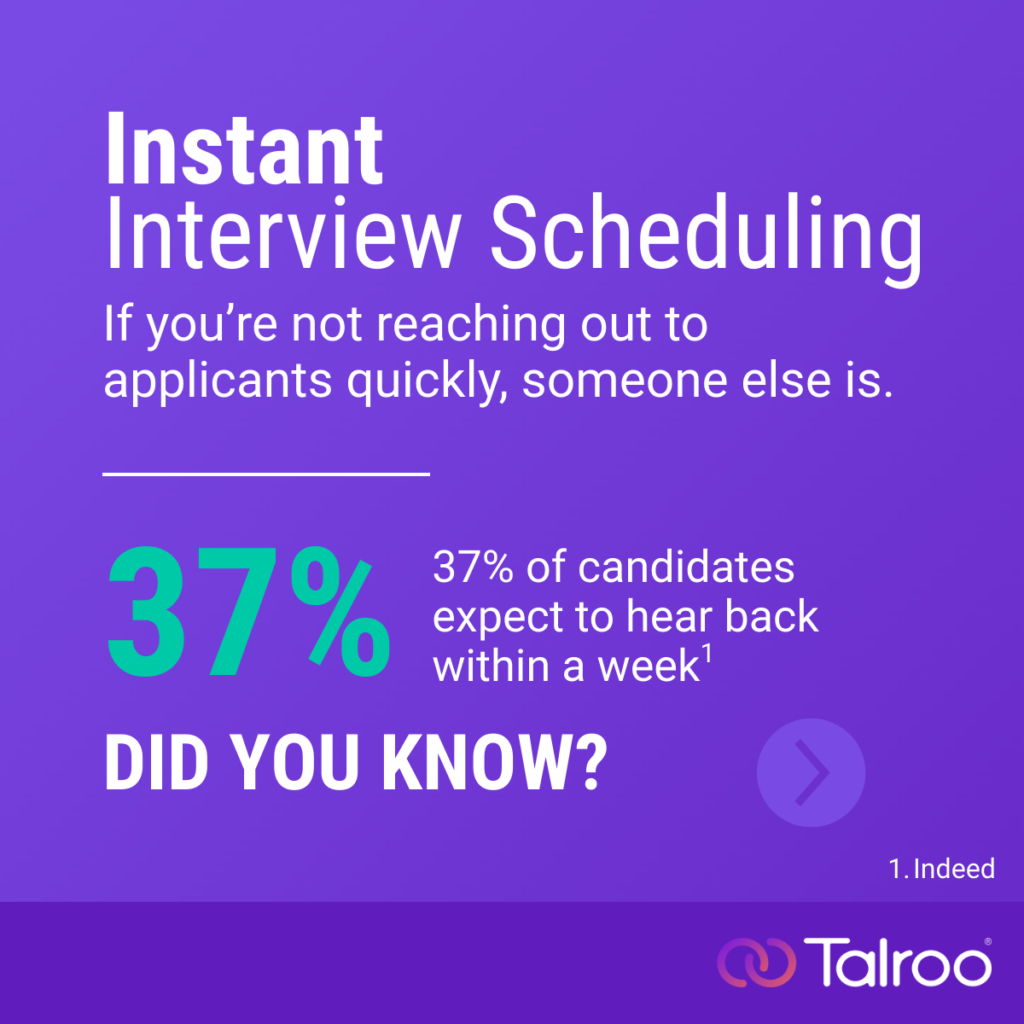
Recruiting Hourly Workers in High-Volume Markets: What’s Working Now
Hiring hourly employees has never been simple, but in today’s labor market, high-volume hiring in industries like retail, hospitality, and logistics can feel like an uphill climb. Employers face challenges such as high turnover, shifting worker expectations, and fierce competition for talent. To succeed, HR and talent acquisition teams need recruiting strategies designed for speed, scale, and candidate experience.
Talroo works with employers every day who are hiring at scale, which means that they also have access to data on what is and what isn’t working to fill roles with qualified talent quickly. Here’s a look at what’s working right now when it comes to attracting, engaging, and converting hourly workers.
1. Geo-Targeted Programmatic Advertising
One of the biggest challenges in hourly recruiting is ensuring your job ads reach the right people in the right locations. Traditional job postings often cast too wide a net, resulting in unqualified applicants or wasted ad spend. Additionally, Talroo data shows that around 70% of frontline job seekers do not have a traditional resume or a profile on major job sites. These candidates are more likely to apply directly through mobile devices, text-to-apply campaigns, in-person, or job boards that don’t require resumes.
That’s where programmatic job advertising comes in. By using geo-targeting, employers can serve job ads only to candidates in specific areas, zip codes, or even near certain landmarks. For industries like retail or logistics, where jobs are location-dependent, this ensures your postings reach candidates who can realistically commute to the role.
What’s working now: Employers are layering in audience data, like demographics and online behaviors, to better match jobs with the people most likely to apply. One Talroo client in the quick-service restaurant space increased application volume by 40% by using programmatic ads that targeted workers within a 10-mile radius of their store locations.
2. Mobile-First Application Experiences
Hourly job seekers are often on the go and applying directly from their phones. If your application process isn’t mobile-friendly, you’re likely losing candidates before they even finish. Research shows that 58% of job seekers apply for roles from their mobile devices. Additionally, people using their smartphones to apply for jobs are more inclined to be employed in the hospitality (72%), transportation (72%), real estate (69%), and warehousing and logistics (69%) sectors. Yet too many employers still require lengthy forms, multiple logins, or desktop-only experiences.
What’s working now: Streamlined mobile-first applications that let candidates apply in minutes, not hours. Features like one-click apply, pre-filled forms, and resume-free submissions are especially attractive to hourly candidates. Employers are also using text recruiting to reach candidates directly and keep them engaged throughout the process.
A Talroo client in the logistics industry cut applicant drop-off by half after redesigning their career site for mobile-first applications, helping them hire thousands of seasonal workers faster.
3. Instant Interview Scheduling
Speed matters in high-volume hourly recruiting. If you’re not reaching out to applicants quickly, someone else is. Studies show that responding to candidates within the first 24 hours can triple your chances of making a hire. According to Indeed, 37% of candidates expect to hear back within a week; only 4% hear back in a day.

What’s working now: Employers are adopting instant interview scheduling tools that allow candidates to book a time directly on a recruiter’s calendar as soon as they apply. This reduces back-and-forth emails and accelerates the hiring process.
For example, a Talroo client in hospitality saw time-to-hire decrease by 35% after implementing automated scheduling. Candidates loved the ability to pick a time that worked best for them, while recruiters could focus on conversations instead of logistics.
4. Competitive Pay Transparency
Hourly workers today are savvy about wages, and many won’t apply without knowing the pay upfront. In fact, a CareerPlug survey showed that nearly half (47%) of job seekers expect to learn about salary before applying. Pay transparency is no longer a nice-to-have; it’s a competitive advantage.
What’s working now: Employers who post salary ranges in their job descriptions are attracting more applicants. Some are even using wage comparison tools in their ads to highlight how their pay stacks up against competitors. Transparency not only drives more interest but also helps filter out candidates who may not be a fit.
In retail, one Talroo client boosted application rates by 25% simply by adding pay details to their job postings.
5. Retention-Focused Recruiting
Recruiting hourly workers isn’t just about filling seats quickly. It’s also about keeping them. High turnover is costly, so retention must start during the hiring process.
What’s working now: Employers are highlighting career growth, flexibility, and employee benefits during the recruiting stage. Hourly candidates want to know not just what they’ll be paid, but also what their future could look like with your company.
For example, logistics employers are showcasing tuition reimbursement programs and pathways to full-time roles, while hospitality companies are emphasizing flexible schedules and employee discounts. These benefits may seem small but can make a big impact on attracting and retaining talent.
6. Data-Driven Recruiting Decisions
High-volume hiring generates a lot of data, but too often that data goes unused. Employers who harness it are seeing better outcomes.
What’s working now: Talent acquisition teams are using analytics to track where applicants are coming from, how quickly they move through the funnel, and which sources deliver the highest-quality hires. With this information, they can double down on what’s working and cut what isn’t.
One Talroo retail client discovered that applicants from targeted social ads were twice as likely to show up for interviews compared to applicants from traditional job boards. That insight helped them shift budget and improve hiring efficiency.
7. Building Candidate Relationships Early
Finally, the most successful high-volume recruiters know that hiring isn’t just transactional; it’s relational. Building a pipeline of candidates before you need them helps employers weather seasonal spikes and unexpected turnover.
What’s working now: Employers are building talent communities through email and text campaigns, keeping candidates warm with job alerts and company updates. When openings arise, they can tap into this pool of interested candidates instead of starting from scratch.
A Talroo client in retail used a candidate nurture campaign to stay connected with seasonal hires year-round, resulting in 30% of those workers returning the next season without the need for new sourcing.
Final Thoughts: A Playbook for High-Volume Success
Recruiting hourly workers in high-volume markets requires speed, precision, and creativity. From geo-targeted programmatic ads to mobile-first applications and instant interview scheduling, the tactics that work today are all about reducing friction and meeting candidates where they are.
Talroo sees firsthand how employers are adapting to succeed despite labor shortages and competitive markets. The companies winning in hourly recruiting are those embracing transparency, leveraging data, and focusing on both speed and retention.
For HR teams looking to fill roles fast and at scale, these strategies aren’t just best practices; they’re essential. By building smarter processes and leaning on the right tools, employers can transform high-volume hiring from a headache into a competitive advantage.
Ready to transform your high-volume hiring? Talroo helps you reach the right candidates faster with data-driven insights and tools built for scale—let’s talk about how we can power your recruiting success.
If you enjoyed this article, you might also like:




